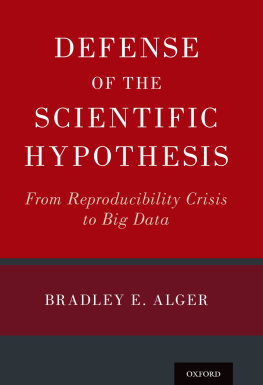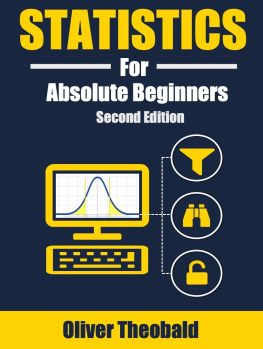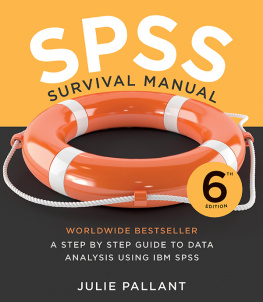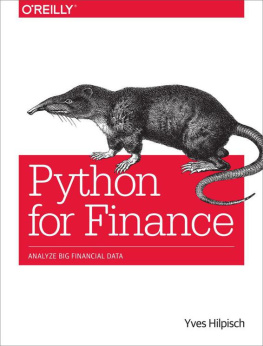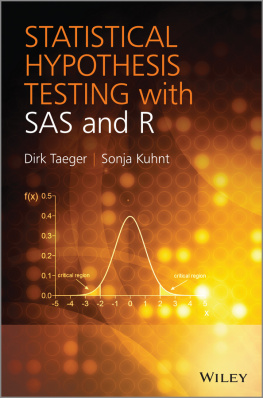
Table of Contents
List of Illustrations
- Chapter 1
- Chapter 2
- Chapter 3
- Chapter 4
- Chapter 5
- Chapter 6
Guide
Pages
A Guide to Financial Regulation for Fintech Entrepreneurs
STEFAN LOESCH
This edition first published 2018
2018 John Wiley & Sons, Ltd
Registered office
John Wiley & Sons Ltd, The Atrium, Southern Gate, Chichester, West Sussex, PO19 8SQ, United Kingdom
For details of our global editorial offices, for customer services and for information about how to apply for permission to reuse the copyright material in this book please see our website at www.wiley.com.
All rights reserved. No part of this publication may be reproduced, stored in a retrieval system, or transmitted, in any form or by any means, electronic, mechanical, photocopying, recording or otherwise, except as permitted by the UK Copyright, Designs and Patents Act 1988, without the prior permission of the publisher.
Wiley publishes in a variety of print and electronic formats and by print-on-demand. Some material included with standard print versions of this book may not be included in e-books or in print-on-demand. If this book refers to media such as a CD or DVD that is not included in the version you purchased, you may download this material at http://booksupport.wiley.com. For more information about Wiley products, visit www.wiley.com.
Designations used by companies to distinguish their products are often claimed as trademarks. All brand names and product names used in this book are trade names, service marks, trademarks or registered trademarks of their respective owners. The publisher is not associated with any product or vendor mentioned in this book.
Limit of Liability/Disclaimer of Warranty: While the publisher and author have used their best efforts in preparing this book, they make no representations or warranties with respect to the accuracy or completeness of the contents of this book and specifically disclaim any implied warranties of merchantability or fitness for a particular purpose. It is sold on the understanding that the publisher is not engaged in rendering professional services and neither the publisher nor the author shall be liable for damages arising herefrom. If professional advice or other expert assistance is required, the services of a competent professional should be sought.
Library of Congress Cataloging-in-Publication Data is available:
ISBN 978-1-119-43670-6 (paperback) ISBN 978-1-119-43675-1 (ePub) ISBN 978-1-119-43672-0 (ePDF)
Cover Design: Wiley
Cover Image: chombosan/Shutterstock
To Hartmann Karl Gnter Loesch, 19372012
About the Book
Fintech companies are revolutionising the way financial services work. Their main strengths are superior agility, systems and customer focus, but established financial services have a strong advantage because they understand how to comply with regulations. This book teaches Fintech executives to attack incumbents in the regulatory arena, and at the same time to create moats against other Fintech companies.
When a company is starting up, regulatory requirements are small. However, they increase rapidly when a company starts growing and regulators start paying closer attention, or when regulators from other jurisdictions are getting involved. Regulators only have limited capacity, and if a company wants to be able to scale without being held back by the regulators, planning the regulatory strategy ahead of time is indispensable.
Going through regulatory texts is hard: even for the most basic financial services, the relevant regulations amount to thousands of pages of dry legalistic prose, describing the regulatory trees in detail but obfuscating the view on the regulatory forest. As a Fintech executive, this book gives you a map of the forest, allowing you quickly to identify the specific trees that matter for you. It clearly explains the purpose and the structure of the regulatory environment, and provides you with frameworks that enable you to develop an effective regulatory strategy.
The first part of the book explains why financial services regulation exists, what its goals are, and how Fintech executives can use regulation to gain a strategic advantage for their companies. The second part gives a more detailed map of the key regulations that Fintech companies have to follow, firstly identifying the most relevant ones, and then distilling the thousands of pages that still remain into about 100 pages in the book.
All EU regulations cited are (c) European Union 19952017 and used based on their reuse policy that can be found on https://ec.europa.eu/info/legal-notice_en which states that Reuse is authorised, provided the source is acknowledged. The Commissions reuse policy is implemented by the Decision of 12 December 2011reuse of Commission documents.
Acknowledgments
I am grateful for the help of Thomas Barker, Pascal Bouvier, Andy Condurache, Maxim Harper, Jonathan Howitt, Jerme Legras, George Markides, Justin McCarthy, Oscar McCarthy, fiona Mullen, Sid Singh and Sean Tuffy at the various stages of this project. It goes without saying that all mistakes still left are mine and mine alone.
I want to thank my familymy wonderful wife Oksana and our two daughters Sophie Alexandra and Batrice Hlnefor their support, and for putting up with me while I was researching and writing this book. I would also like to thank my parents, Christa Loesch-Goldschmidt and Wilfried Goldschmidt, just for being there for me and my family.
About the Author
Stefan is a theoretical physicist by training, holding a degree from the University of Bonn, and he spent some time at Ecole Polytechnique near Paris. He also holds an MBA degree from INSEAD.
Immediately after university he became a quant, developing pricing software for derivatives, where he lead Paribas' equity derivatives quant team worldwide. After the MBA he joined McKinsey & Co. as a consultant in the Corporate Finance practice, which is where he first got introduced to financial services regulation proper, in the form of the Basel 2 regulations. He then joined J.P. Morgan where he continued advising clients on Basel 2, helping them to position their balance sheets to optimise regulatory and economic capital and liquidity constraints.
After leaving J.P. Morgan he built an edtech platform for business schools to improve their online and classroom teaching. He was also invited to join the PRMIA Education Committee, and to co-edit and co-author the most recent revision of the PRMIA Handbook, the study guide for students taking the prestigious Professional Risk ManagerTM exam. More recently he was serving as CTO of an early stage start-up in the non-traditional lending space. His current focus is on bridging the gap between crypto and traditional finance, setting up structures that allow both of those spaces to work together while being in compliance with the applicable regulations.
PART I
Fintech Regulation and Strategy
CHAPTER 1
Regulatory Strategy for Fintech Companies
The Fintech spacelike the overall tech space a few years earlieris evolving at breakneck speed, even though from a low base when compared to the incumbents currently present in the market. Financial services is a highly regulated industryand for good reasons, as it is the lifeblood of a modern economy, and because it deals with people's live savings. Because of the lack of scale, Fintech has thus far mostly escaped regulation. However, this is coming to an end: as Fintech grows up and moves into the mainstream of finance, regulation on a par with that applied to other financial services is unavoidable.
Next page

